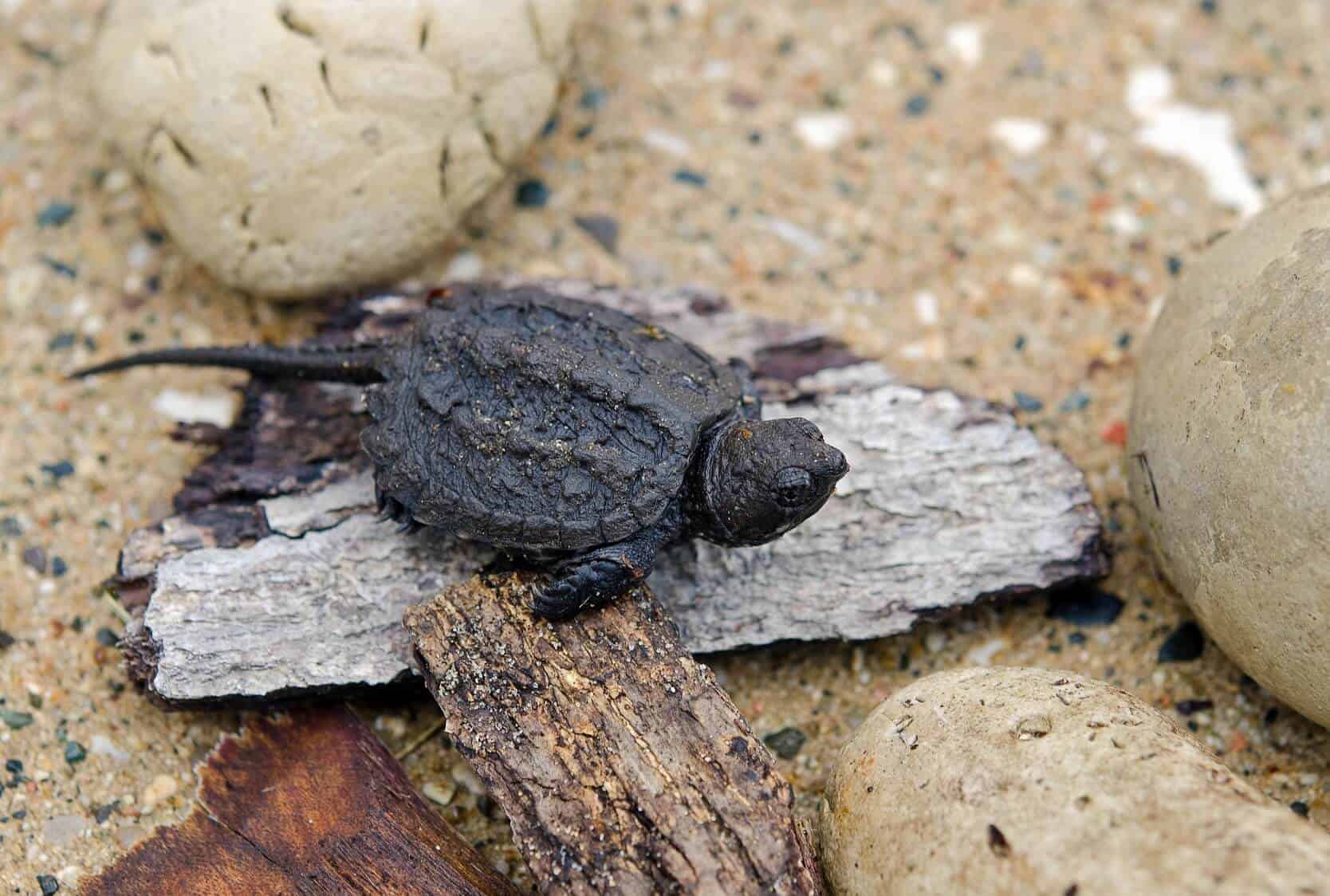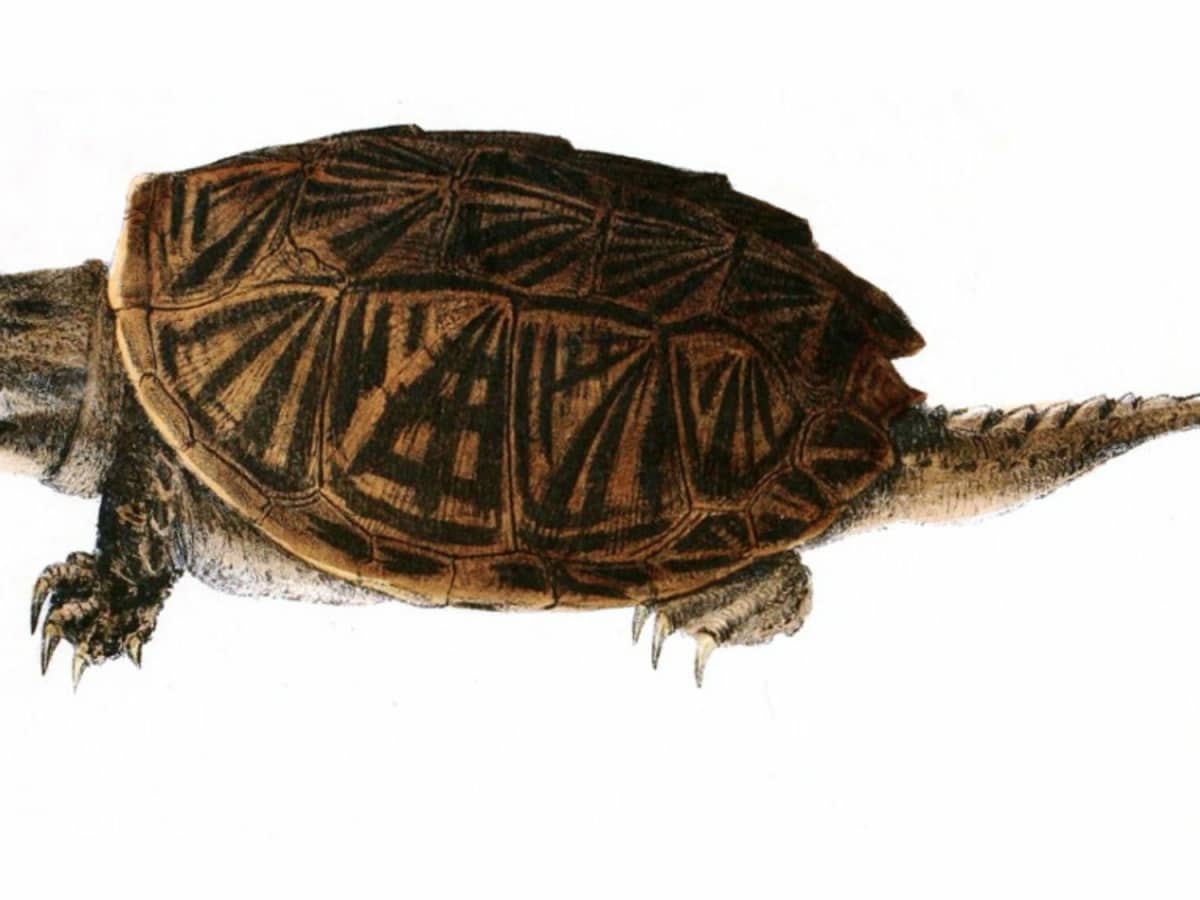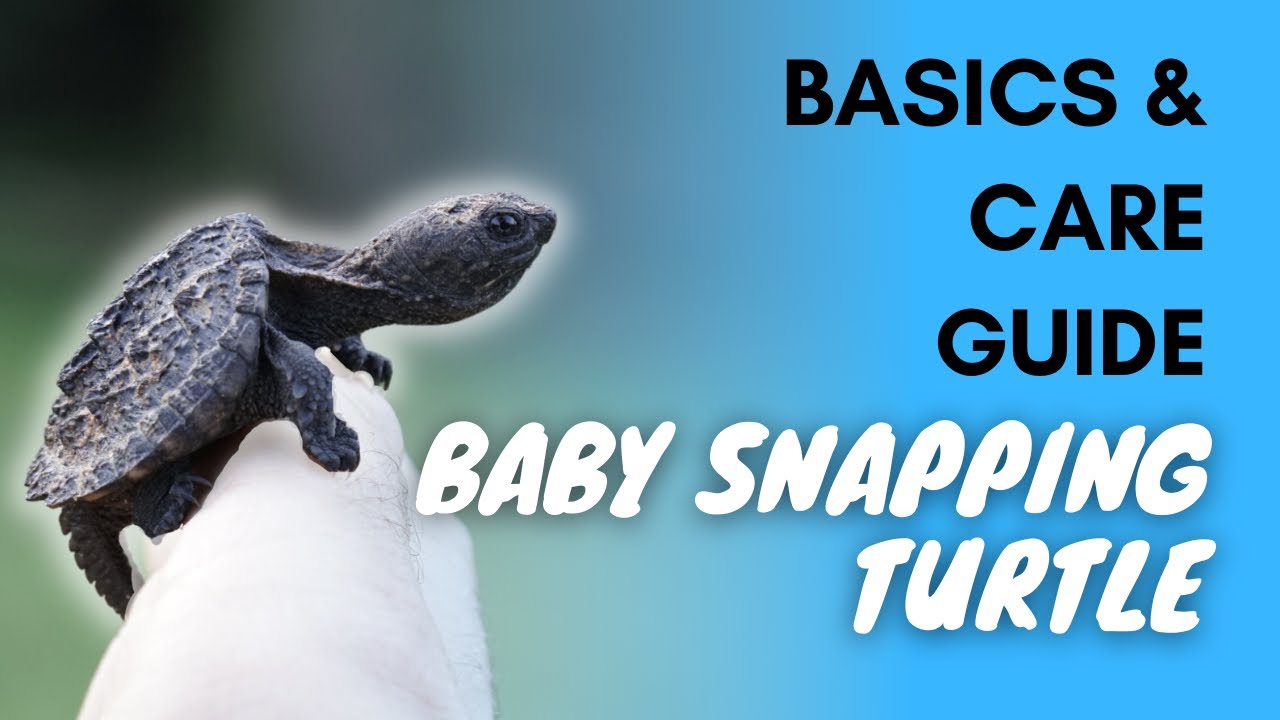To care for a baby snapping turtle, provide a suitable habitat with clean water and a basking area. Taking care of a baby snapping turtle involves creating a proper environment that mimics its natural habitat.
Ensure the water in the tank is clean and at the right temperature, and provide a basking area for the turtle to regulate its body temperature. Feeding the turtle a balanced diet of live prey and leafy greens is essential for its growth and health.
Regularly clean the tank and monitor the turtle for any signs of illness or distress. By following these care guidelines, you can help your baby snapping turtle thrive in captivity.

Credit: m.youtube.com
Habitat Setup
When it comes to caring for a baby snapping turtle, creating the right habitat setup is crucial for its health and well-being. Providing the ideal enclosure, maintaining suitable temperature and lighting, and ensuring water quality are essential aspects of creating a comfortable living environment for your baby snapping turtle.
Enclosure
The enclosure for a baby snapping turtle should be spacious enough to allow for swimming and basking. A 20-gallon tank is recommended initially, with plans to upgrade as the turtle grows. Ensure the enclosure has a secure lid to prevent escape and to maintain the proper humidity levels.
Temperature And Lighting
Maintaining the right temperature is critical for the health of your baby snapping turtle. The basking area should have a temperature of 85-90°F, while the water temperature should be around 75-80°F. Use a combination of UVB and UVA lighting to provide the necessary spectrum for proper growth and shell development.
Water Quality
Keeping the water clean is essential for the well-being of your baby snapping turtle. Use a good filtration system to remove waste and maintain water quality. Regular water changes, typically 25-50% every 2-4 weeks, are necessary to prevent the buildup of harmful substances.

Credit: www.fishkeepingworld.com
Feeding
Caring for a baby snapping turtle involves providing them with a suitable diet that includes both animal and plant matter. Offer them a mix of commercial turtle food, live or frozen prey, and fresh vegetables and fruits to ensure they receive a balanced and nutritious diet.
Additionally, ensure they have access to clean water and a suitable basking area.
Feeding a baby snapping turtle is one of the most important aspects of caring for it. A well-fed turtle is a healthy turtle. Here are some things to keep in mind when feeding your baby snapping turtle:Dietary Needs
A baby snapping turtle’s diet should consist of protein-rich foods such as insects, worms, and small fish. As they grow, they will start to eat more plant-based foods, such as leafy greens and vegetables. It is important to provide a varied diet to ensure that your turtle is getting all the nutrients it needs.Feeding Schedule
When it comes to feeding your baby snapping turtle, it is important to establish a feeding schedule. For young turtles, feed them once a day. As they get older, you can reduce the frequency to every other day or even every few days. Be sure to monitor your turtle’s weight and adjust their feeding schedule accordingly.Feeding Tips
Here are some feeding tips to keep in mind:- Only feed your turtle as much as they can eat in 10-15 minutes
- Remove any uneaten food after feeding to prevent bacteria growth
- Provide a shallow dish of water for your turtle to soak in after feeding
- Do not feed your turtle human food, as it can be harmful to their health
Handling And Interaction
Proper handling and interaction are crucial for the well-being of your baby snapping turtle. By following appropriate techniques and nurturing a bond with your pet, you can ensure a healthy and thriving relationship. Let’s explore some essential aspects of handling and interacting with your baby snapping turtle.
Proper Handling Techniques
When handling your baby snapping turtle, it’s essential to approach with caution. Gently lift the turtle from the sides of its shell, avoiding the tail and limbs. Support its weight evenly to prevent stress or injury. Always wash your hands before and after handling to prevent the spread of germs.
Bonding With Your Turtle
Bonding with your baby snapping turtle is a gradual process that requires patience and consistency. Spend time near the turtle’s habitat and speak in a soothing tone to create familiarity. Offer small treats like live insects or commercial turtle food from your hand to build trust and association. Avoid sudden movements or loud noises, as they can startle the turtle.
Health And Wellness
Health and wellness are essential aspects of caring for a baby snapping turtle. Ensuring their well-being and promptly addressing any signs of illness is crucial for their longevity and happiness.
Signs Of Illness
It’s important to be vigilant for any signs of illness in baby snapping turtles. Common symptoms of illness include loss of appetite, lethargy, abnormal swimming behavior, swollen eyes, and abnormal shell growth. If you notice any of these signs, it’s crucial to seek veterinary care promptly.
Regular Veterinary Check-ups
Regular veterinary check-ups are essential for the overall health and wellness of baby snapping turtles. Schedule routine visits with a reptile specialist to ensure that your turtle is growing and developing properly. These check-ups can help catch any potential health issues early on, increasing the likelihood of successful treatment.
Growth And Development
Understanding the growth and development of a baby snapping turtle is crucial for providing the best care. As these fascinating creatures mature, they undergo various changes that require specific attention and care. From their molting process to size expectations, knowing what to expect can help you ensure the well-being of your pet turtle.
Molting Process
The molting process is an essential part of a baby snapping turtle’s growth. As they grow, they shed their old skin to accommodate their increasing size. During this period, it’s important to provide them with a suitable environment that allows for comfortable shedding. Ensure that the tank or habitat has a soft substrate and a shallow water area, facilitating the molting process.
Size Expectations
Understanding the size expectations of a baby snapping turtle is vital for their care. Typically, they grow rapidly during the first few years of their life. On average, a baby snapping turtle can reach a shell length of 4 to 5 inches within the first year. As they continue to grow, their size can exceed 10 inches in shell length. Proper nutrition and a spacious habitat are essential for supporting their healthy growth and development.

Credit: pethelpful.com
Behavioral Traits
When it comes to caring for a baby snapping turtle, understanding their behavioral traits is essential. By knowing how they behave, you can provide the best care and environment for your pet. Let’s delve into the behavioral traits of baby snapping turtles, focusing on their territorial behaviors and socialization.
Territorial Behaviors
Baby snapping turtles are known to exhibit territorial behaviors, particularly when it comes to their living space. They may fiercely defend their territory, especially when they feel threatened or stressed. It’s crucial to provide them with a spacious and secure habitat to minimize territorial aggression.
Socialization
Despite being territorial, baby snapping turtles can also display social behaviors, especially when interacting with other turtles. While they may not be as social as some other species, they can coexist peacefully in a properly designed habitat. Providing hiding spots and separate basking areas can help minimize conflicts and promote healthy socialization.
Conclusion
Taking care of a baby snapping turtle requires patience, knowledge, and love. By providing a suitable environment, proper nutrition, and regular monitoring, you can ensure the well-being of your little reptile. Remember, these tiny creatures depend on you for their survival and happiness.
With the right care, your baby snapping turtle will thrive and bring you joy for years to come.






Leave a Reply